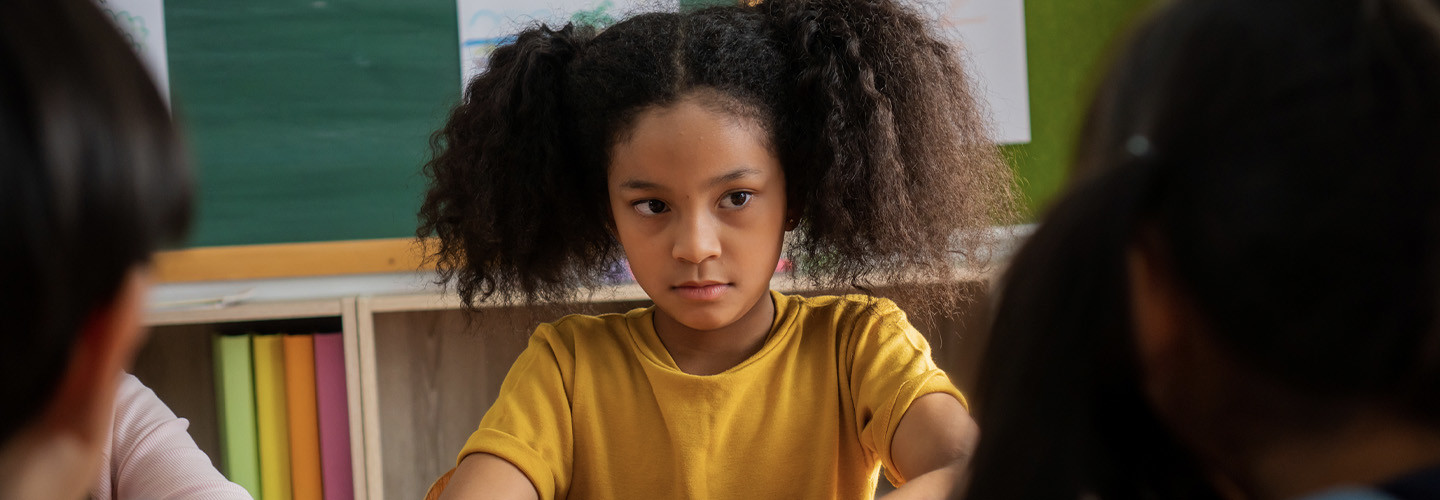Equity problems persist in K–12 education, and speakers at ISTELive 23 didn’t sugarcoat the challenges schools and students are facing. Some sessions at this year’s conference focused specifically on equity and inclusion struggles, while others — specifically targeting esports, artificial intelligence and additional topics — included an equity component. Experts advocated for marginalized populations, students in rural areas and students with disabilities.
In a panel Wednesday, speakers shared their own experiences with prejudice and inequity and highlighted how they were working to encourage change in education today. Ken Shelton, one of EdTech’s K–12 IT influencers and a consultant with Elevating Education, Sophia Mendoza, also a K–12 IT influencer and director of instructional technology at Los Angeles Unified School District, and Sawsan Jaber, an English department chair for Maine West High School and a keynote speaker, joined the panel for “Equity in Education: A Journey, Not a Destination.”
READ THE INTERVIEW: Sophia Mendoza shares how technology empowers students.
“This is like equity church,” said Jacob Wilson III, an education strategist at CDW and the panel’s moderator, midway through the discussion as audience members nodded and murmured in agreement with the panelists’ statements.
They spoke on the importance of bringing diverse voices to the table, but added that, often, minority stakeholders face barriers that prevent them from showing up even when invited.
“A lot of these marginalized groups are not sitting at the table because, in most cases, they’re trying to survive,” Jaber said. “Fighting in these spaces to have control and power isn’t at the forefront. They can’t even start to think that far when their basic needs are not being met. We have to give them the basic needs in order for us to say, ‘Okay, now, what do you want and how can we help you get there?’”
Districts Use a CAST Organization’s Framework to Move Toward Equity
On Sunday, districts shared their journey to equity through self-reflection. Co-presenting with Christine Fox, project director at the Center on Inclusive Technology & Education Systems at CAST, and Luis Perez, a technical assistance specialist at CAST, were IT leaders from Jenks Public Schools in Oklahoma and Grossmont Union High School District in California.
In the session “Keep Climbing: Transcend Toward Inclusive Technology Systems,” Bijul Dalal, assistive technology teacher at Grossmont, shared how her district has had a one-to-one model for a decade.
Click the banner below to keep up with ed tech innovations when you sign up as an Insider.
“I thought we were doing a really, really good and decent job including all learners,” she said. “I think other people in the district thought we were too, but through the process of taking one step at a time through this framework, as we knew better, we did so much better.”
Dalal referred to the Center on Inclusive Technology & Education Systems Framework, which was developed by CAST. The framework, which was developed based on current research, aims to give “district leaders the opportunity to collaborate so that all learners with disabilities have the supports, scaffolds, and tools to be and feel successful,” according to the CITES website.
“We’ve made systemic changes,” Dalal said. “Change in an institution — it’s not linear, and it’s not elegant.”
Janna Greathouse, district assistive technology coordinator for Jenks Public Schools, shared how the framework helped break down long-standing silos in her schools. “Individually, as departments, we were doing our own planning, but it wasn’t together,” she said. “We were all working in our own silos. So, we might find things out too late to really have an impact on purchases that were made.”
Innovating with Tech to Bring Connectivity to Students
Conversations were also had Sunday about equity for students who lack connectivity. In the session “Real Talk: Let’s Talk About Culturally Responsive CS Classrooms,” Computer Science Teachers Association equity fellows shared takeaways from their own projects and research.
MORE ON EDTECH: Schools work to reduce the STEM divide for Black students.
Jigar Patel, coordinator of innovations and special projects at Tuscarora Intermediate Unit 11, shared how he brought connectivity to students in his Pennsylvania district during the pandemic. He opened by sharing that 600,000 of the state’s residents were without internet access in their homes, adding that hotspots often didn’t work because of a general lack of cell towers and infrastructure in rural locations.
He then explained how he and his team used Raspberry Pi devices to bring internet to students who couldn’t otherwise connect. The Raspberry Pi technology allowed the students’ devices to connect using Pi over Wi-Fi. They were equipped to run in a web browser on any computer with Wi-Fi capabilities, any tablet, a smartphone and Chromebooks. This allowed students to access class materials, lessons and assessments that were loaded onto the Raspberry Pi devices, and the machines were also equipped with explainer videos for students who might become stuck on a lesson.










